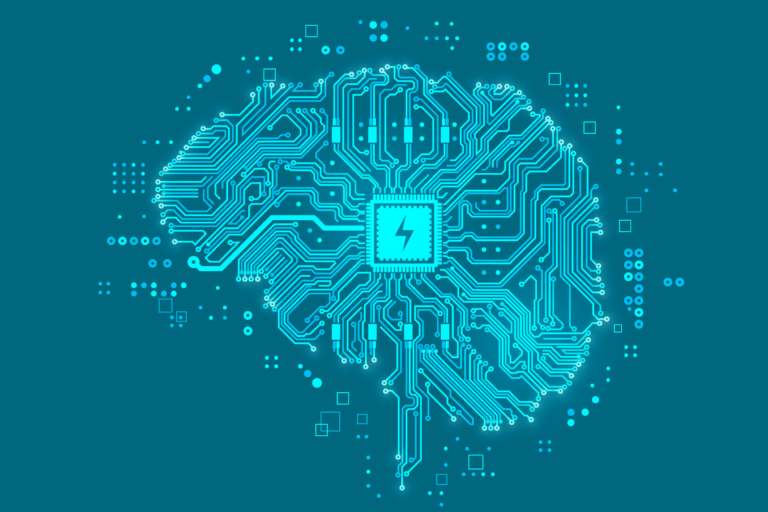Procurement Skill Set for the Next Transformation
In the dynamic world of procurement, it seems the only constant is change. Over the decades, companies have reshaped their procurement operating models to match the shifting landscape of goods and services, mirroring the ever-evolving corporate ethos of each era. With each transformation, the skills demanded in the procurement realm have undergone a metamorphosis, aligning with the demands of the ever-changing business environment.
Factors like the formalization of corporate best practices, technology adoption and globalization have pushed the advanced world’s economies into an accelerating race for value creation and brought the rest of the world’s economies into parity with common ways of working and standards. As such, procurement practitioners should keep a keen eye on the horizon for new opportunities and likely value creation disruptors such as advanced and generative artificial intelligence (Gen AI) or the rewiring of global supply chains in response to global geopolitics.
Powered by record funding, multitudes of vendors globally are speeding their concepts and offerings into the Gen AI marketplace. According to Bloomberg Intelligence, the total Gen AI market is anticipated to increase from $40 billion in 2022 to over $1.3 trillion in 2032, representing an estimated 42% compound annual growth rate through 2032.1
These changes and the associated transformative outcomes will impact nearly all core business and selling, general and administrative processes, such as finance, procurement, human resources (HR), information technology (IT), marketing, sales, and service. Indeed, The Hackett Group’s research reveals that Gen AI could yield as much as a 54% increase in human productivity and a 47% cost reduction for procurement teams over the next five to seven years.
1 “Generative AI to Become a $1.3 Trillion Market by 2032, Research Finds,” Bloomberg Intelligence, June 2023.
Evolving skill sets with technology: A historical perspective
The procurement function was initially centered on purely transactional execution excellence, establishing its base administrative function in a post-World War II era of creating orders to procure required goods and services. With the evolution of greater Taylorism, the procurement function became a subset of scientific management practices focused on distilling efficiency and effectiveness. Procurement moved from no longer simply buying to doing so with operational excellence, as well as creating value through the strategic sourcing of goods and services and the proactive management of supplier relationships. This approach maximized value and return from process efficiency and purchase cost reduction.
Post-industrial technology adoption further formalized and solidified best practices and processes surrounding this function into discreet subprocesses, anchored in system-based recordkeeping that was heavily facilitated by human hands. Computers like the AS/400 were the first to be widely adopted by business enterprises and served as a commonly used platform for enterprise resource planning (ERP) systems, which became popular in the 1990s. The ERP revolution pushed the envelope further into standardization and data integration. This was quickly followed by the dual forces of the internet age and the rapid advancement of globalization that opened up and enabled access to broader markets through connectivity, while new software further automated and standardized processes to drive even more value. Procurement leaders began to bolt on e-procurement solutions – which created out-of-the-box functionality within subprocesses – such as sourcing, ordering, contracting and invoicing.
Traditionally, procurement leaders were acutely focused on the management practices and skills that achieved the most value from their function. Or, in other words, how well and how often they could source and negotiate deals that translated into tangible returns on investment. As more processes were automated, attention shifted away from a standard process to stakeholder management. New value was found through procurement teams effectively collaborating with the business and leveraging technology to drive increased compliance. Since the dawn of the new millennium, practitioners have been adapting their required skills to meet the demands of the information-based world. Two skills have traditionally been and still are paramount – business partnership and systems knowledge and application.
The Hackett Group® has been conducting business benchmarking for more than two decades. The benchmarking process is a curated approach undertaken with organizations that wish to better understand how their procurement strategy performance compares to other companies. Data from benchmarking shows that Digital World Class® organizations – or in other words top-performing companies – are 86% more likely to be viewed as a valued business partner than peer group organizations and deliver 96% higher spend cost reduction savings. Long gone are the days that a large group of sourcing specialists could use a “three bids and buy” approach to achieve savings and call it a day. Now teams are expected to do more deals with fewer suppliers, and procurement leaders earn their seat at the table through how well they can leverage systems to extract information, translate that to strategy and persuade business stakeholders to collaborate on that strategy.
Higher value-driving approaches – like strategic sourcing, suppler relationship management and category management – tap into value-added engagement with the business, while systems and data architecture knowledge provide the credibility and fact base to lead transformation across the enterprise. Recently global supply chains have presented increasing risk to supply availability, elevating third-party risk management to greater importance within the procurement toolkit, as corporate leaders demand greater visibility into their extended networks of suppliers’ inherent and residual risk. Procurement teams are tasked with distilling even more data to apply insights into how their third parties are behaving. Simultaneously key demographic shifts are taking place with a large swath of the working population leaving the workplace and taking with them not only functional know-how but also institutional knowledge. This gap will have to be filled with fewer workers who can do more with larger, richer datasets. Now more than ever, a Digital World Class® procurement practitioner needs not only technical functional expertise, but also a high emotional quotient to navigate the corporate landscape and train the next set of managers. Procurement is acting as a hub surrounded by many corporate groups such as the C-suite, finance, supply chain, risk, IT and HR.
New challenges, new skills
The advancement and adoption of smart automation, machine learning, and Gen AI is the next transformation catalyst changing the procurement function’s role in that model. Furthermore, an apparent retreat from globalization that created complex systems across the world and contributed to decades of cheap goods and low inflation is forcing corporations to reshore their extended supply chains.
Gen AI is expected to create a significant advancement in workers’ productivity. This will help fill the gap between the current and forecasted drop in skilled procurement personnel. It will also likely foment new innovations, which we do not or cannot foresee. So, what can we expect, if anything? What skills will the procurement practitioner need to adopt?
According to The Hackett Group’s 2022 Source-to-Pay Talent Management Study, respondents rated the following digital skills as being the most important in the future:
- Cybersecurity
- Advanced analytics tools
- Data structures and models
- Business intelligence/visualization tools
- Automation and robotics usage and deployment
Procurement should focus on both the softer skills and technical skills in order to deliver higher value-added services to business stakeholders. The combination of data insights, procurement networks and institutional knowledge are required to fine-tune strategy into real execution. The best procurement professionals have been and will continue to be those who can communicate their insights to persuade both internal stakeholders and external partners to support their value-add agenda. To support this, procurement practitioners need to quickly get smart on Gen AI language models and prompt engineering. This provides them with the knowledge to apply advanced technology quickly to a multitude of both known and yet to be discovered use cases, supplying business partners with actionable insights that have a finer degree of detail and nuance so they can have a seat at the table. Knowledge of how these systems work will enable a procurement leader to rapidly connect the dots between systems’ capability and business requirements.
The speed of development and application of Gen AI should also be considered in the procurement transformation road map. Some Gen AI will be incorporated into existing platforms that companies have spent significant investment to deploy over time. Other solutions will be developed independently by leveraging open-source capabilities that are connected securely to application programming interfaces within the existing technology architecture. Therefore, procurement leaders need to be skilled enough to understand not only what use cases have potential, but also when to move forward given the business case. In these early days, many companies are having to consider whether to build themselves or wait for off-the-shelf solutions. Considering the open-source nature of some of this technology, we see the potential for a world in which the traditional SaaS procurement platforms will have more competition from savvy in-house developers. Procurement leaders should be at the forefront of this business decision.
As more processes are ingested into AI models – for example, statement of work creation, bid optimization, supplier onboarding and vetting, and risk assessment scoring – procurement practitioners will need to know not just the parameters of what they’re trying to produce with these models, but also how to use the output. Gen AI has great potential, but it is still in its youth and prone to error. Therefore, the traditional skill sets and expertise within the procurement toolkit should not be lost or delegated to the machine. Rather, a scrupulous eye of review should be applied to the outputs to ensure authenticity and integrity. To add further complexity, these practitioners will need to leverage vast amounts of information sources at their disposal and in a remote setting.
Finally, procurement professionals will be tasked with managing the emerging trend of reshoring industrial capacity. Their skills will be called on increasingly as industrial capacity is brought into new markets closer to home. It is easy to foresee the need to increase technical skills such as new local languages, supplier capabilities in new geographies, advanced modeling capabilities to assess the impacts (e.g., cost and risk) of changing the supply chain structure and qualifications of new suppliers. The procurement teams that can build new supply chain capacity the quickest will win. This is a capability that procurement teams are, or should be, fine-tuning today with the increased importance of supplier risk management.
The next Digital World Class® procurement leader or practitioner will need to blend a comprehensive mix of both soft and technical skills and capabilities to affect transformation effectively. These traits include:
- Well-versed in traditional procurement capabilities
- Keenly aware of systems integration, data insights and its application
- Adaptive to AI-based capabilities
- Capable of working independently in a remote environment, but still informed and attuned to the institutional ways of working within their organization
Does your team have the skills required to lead the next procurement transformation?
Backed by our unparalleled benchmarking data and best practices repository, as well as experience across the full transformation life cycle, The Hackett Group® is ready to support:
- Talent management, skills and competencies, role definition, and career pathing
- Digital transformation strategy, smart automation and analytics
- Digital procurement solutions strategy, blueprint, tool selection and road map
- Technology road map, cloud migration and modern architecture
- Performance benchmarking and best practices
- Procurement and supply chain service delivery model design, implementation, and optimization
- Performance management and analytics
- Master data management and architecture
- Spend management and analytics
- Working capital and cash acceleration
- Selling, general and administrative cost optimization
- Transformation management office, change management and communications implementation
Download the report to learn more about how AI and the rewiring of global supply chains are transforming the procurement and supply chain functions, requiring the development of new skills to meet today’s challenges.




